9 Unique Things You Can Do in Singapore (food, attractions, and more)
I love helping visitors to Singapore discover more about the city; I feel most visitors do not get the chance to even scratch the surface of what makes Singapore unique and interesting and I want to change that.
I put together this guide on unique experiences that visitors can try out in Singapore, and I included some iconic attractions that you can only find here. Even amongst its close neighbours, Singapore as a lot to offer that’s unique to itself.
1. Eat at a hawker centre
Hawker centres represent the melting pot of the four main cultures of Singapore: Chinese, Malay, Indian, and “other” (I’ve found a great fish and chips at a hawker centre before).
Eating at a hawker centre gives you a cultural experience unique to Singapore. They are clean, cheap, have a diverse range of cuisines, and are celebrated amongst locals as a community gathering spot to engage with neighbours. While neighbouring countries have similar outdoor eateries, these do not tick all the boxes that Singapore’s do.
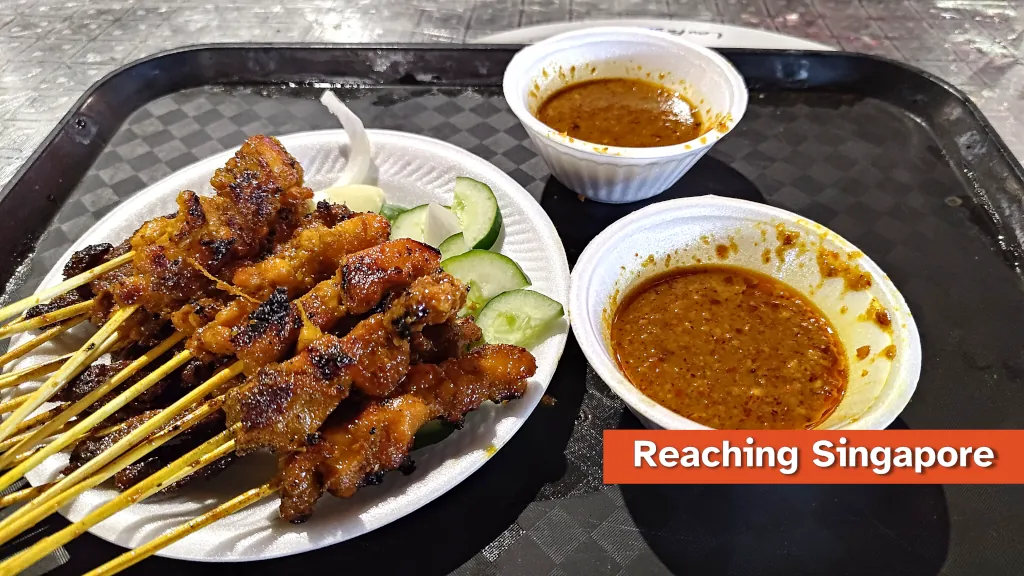
Some of my favourite local hawker dishes include:
- Chicken rice - poached chicken served on a bed of fragrant rice (cooked with chicken stock)
- Satay - smokey grilled sticks of beef, pork, chicken, or lamb served with peanut sauce
- Laksa - a bowl of noodles drenched in a broth made of coconut milk and various spices, served with prawns, fish cake, tofu, and cockles
Food at a hawker centre is affordable. Meals typically cost between S$3 and S$20 per person. Generally seafood dishes are more expensive, and can cost over S$50 per person (e.g. chili crab).
Many hawker centres specialise in a certain type of cuisine or a certain meal of the day. E.g. some specialise in Malay food or Indian food, while others might specialise in lunch or dinner. Hawker centres will generally have food choices available covering every combination, however they might be ‘famous’ for a particular thing.
There are over 100 hawker centres in Singapore! Some of my favourites that I usually recommend to visitors include:
- Old Airport Rd - located in the inner-East, a great choice for lunch or dinner
- Maxwell - home to the famous Tian Tian Chicken Rice (I found 5pm to the best balance of being hungry and having minimal queue)
- Lau Pa Sat - after 7pm this hosts the famous Satay Street (go to stall 7 and 8, don’t worry about the queue)
- East Coast Lagoon - a local favourite for satay, but a bit hard to get to unless you take a taxi
Bring a packet of tissues with you if you are visiting a hawker centre. These are used to reserve a table (‘chope’ in local parlance) and to clean up after yourself - make sure you return your tray when you have finished eating.
I wrote a full guide on how to order, eat, and enjoy hawker centres in Singapore. Check it out here: reachingsingapore.com/hawker-centre-guide
2. Changi Airport
Changi is frequently ranked as one of the best airports in the world. It has stacks of unique fun activities that make it a delight to use, including a butterfly garden, indoor slide, and a free movie theatre. But I feel a frequently overlooked unique experience in Changi Airport is the food.
Changi Airport is home to a microcosm of Singapore’s diverse range of food.
Some of the unique-to-Singapore food options I like to recommend to visitors include:
- Hawker stalls at Terminal 3 - selling real hawker food in the airside transit area
- Paradise Dynasty - a home-grown Singaporean restaurant specialising in local Chinese dishes
- 4-Fingers - affordable crispy fried chicken and another home-grown Singaporean brand
While all of these are within Changi Airport, some of the best options are “landside” (meaning in Singapore). Thankfully Singapore passport control is very easy for most people, so I highly recommend checking out the landside dining, even if you only have a few hours in transit.
Also check out Irvin’s salted egg yolk fish skin (no affiliation) for an interesting local snack choice that you can eat on the plane (it makes a nice souvenir as well if you can figure out how to safely transport it all the way back home).
3. Jewel
Jewel is a giant indoor complex located next to Changi Airport and home to the iconic indoor waterfall.
The waterfall at Jewel is 40m high and is surrounded by over 2000 trees and shrubs from around the world. And it’s all kept indoors!
It also has a cool train running through the middle. The train is for airside passengers transiting between Terminal 2 and Terminal 3 (you will need to be arriving or departing on a flight to catch the train past the waterfall).
Other attractions I like to recommend at Jewel include:
- The bridge at the Canopy Park level - an elevated and more exclusive view of the waterfall
- Hedge maze - a great way to lose the kids for half an hour
- Fun slides - an alternative to the ones inside, this is also a great way to keep the kids busy while waiting for your next flight
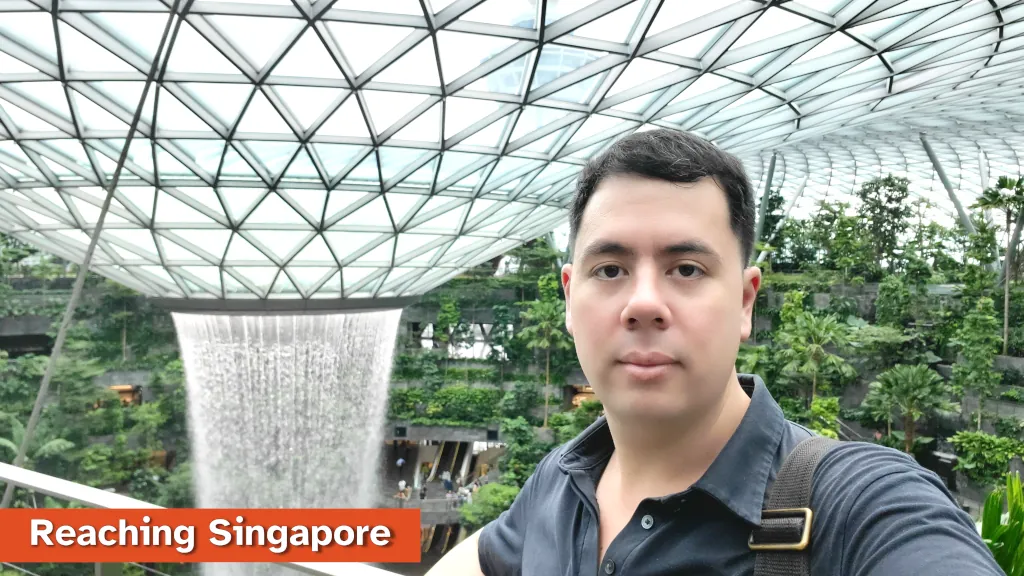
These attractions do attract a small fee. Check out Jewel’s website here for more details.
4. Cheap travel SIM cards
I like recommending to visitors - if they are travelling on to another destination after Singapore - to pick up a travel SIM card while they’re here. This oddly unique proposition in Singapore works best if you are travelling to a few different countries across Asia.
Lots of Singapore telcos sell SIM cards that include gigabytes of data to be used when roaming across dozens of countries in the region. While these were traditionally targeted at Singaporeans who love to travel, there is nothing stopping foreigners using these SIM cards (you need a passport to register the SIM, but seems every country has that rule these days).
My preferred recommendation is SIMBA as it is widely available. Circles.life is another option as well. I’m not affiliated with any of these companies.
A SIM card costs roughly S$20 for 1-2gb of data that lasts 30 days. This can be used in countries such as Malaysia, Thailand, Indonesia, and Australia.
I find this is useful because:
- No need to buy a SIM card for each country
- Data can be used as soon as you land (great for filling out pesky arrival forms)
- Prepaid so you can’t run up a big bill roaming
5. Gardens by the Bay
The iconic Gardens by the Bay are a 100-hectare park area located on the edge of Singapore’s downtown area in the shadow of Marina Bay Sands. The gardens are best known for their supertrees - 25-50m tall tree-like structures home to more than 200 species of plant.
Most of the Gardens are free to visit. This means you can get up-close and personal with a supertree without having to pay an entrance fee.
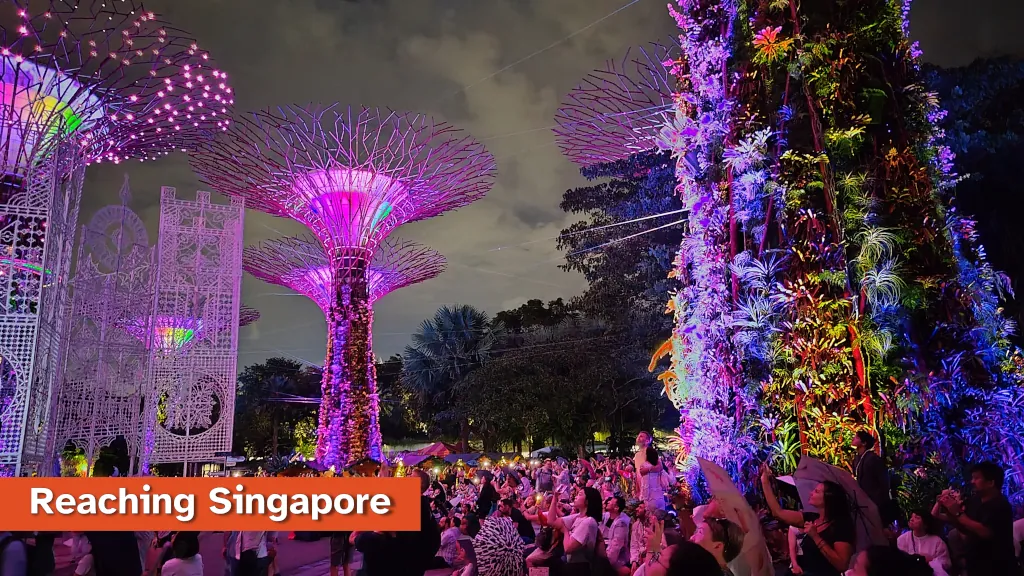
Also check out the cloud forest and flower dome - these are paid areas of the Gardens home to exotic and intriguing plants, flowers, and environment.
I included the Gardens by the Bay as part of my 24 hour guide to Singapore. Check out the video here for more detail: https://youtu.be/o1YnhpFdEWE
6. Bird Paradise
Singapore has a host of unique wildlife attractions, but the Bird Paradise has to be my absolute favourite.
I haven’t seen anywhere else where you can get up close and personal with such a wide variety of birds. The Bird Paradise has these giant netted enclosures that allow the birds to fly free while you walk amongst them.
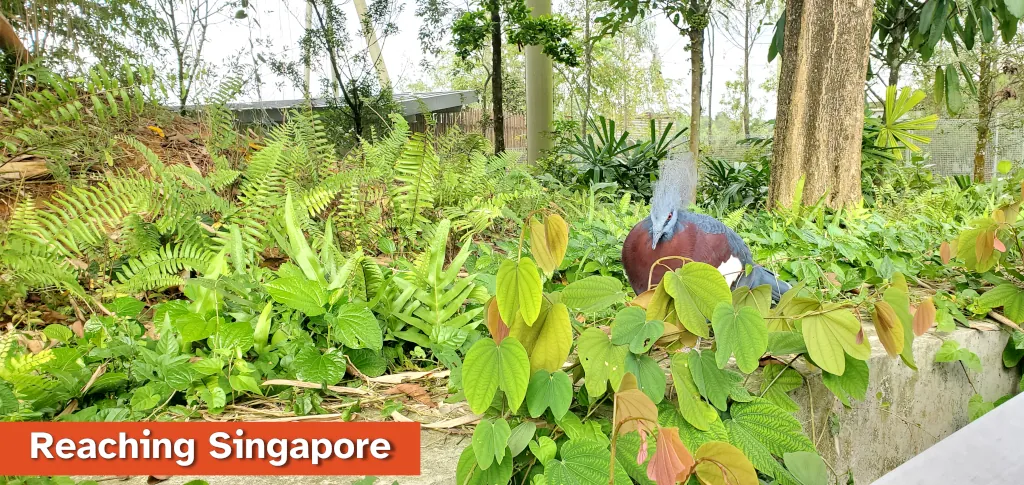
The Bird Paradise is located in the Mandai Wildlife area and costs S$48 for an adult and S$33 for a child. More detail can be found on their website here
7. UNESCO World Heritage Listed Botanic Gardens
Singapore’s Botanic Gardens are over 150 years old and are an important source of research and conservation for tropical plants native to South-East Asia. The Botanic Gardens are also UNESCO World Heritage listed.
There are over 10,000 types of plants to see, including rare and endangered species, spread over a series of public areas and speciality gardens (most of which are free to visit). The themed speciality gardens include the:
- Healing Garden - medicinal plants
- Ginger Garden - ginger and related plants
- Fragrant Garden - check it out in the evening when plants are giving off their scents
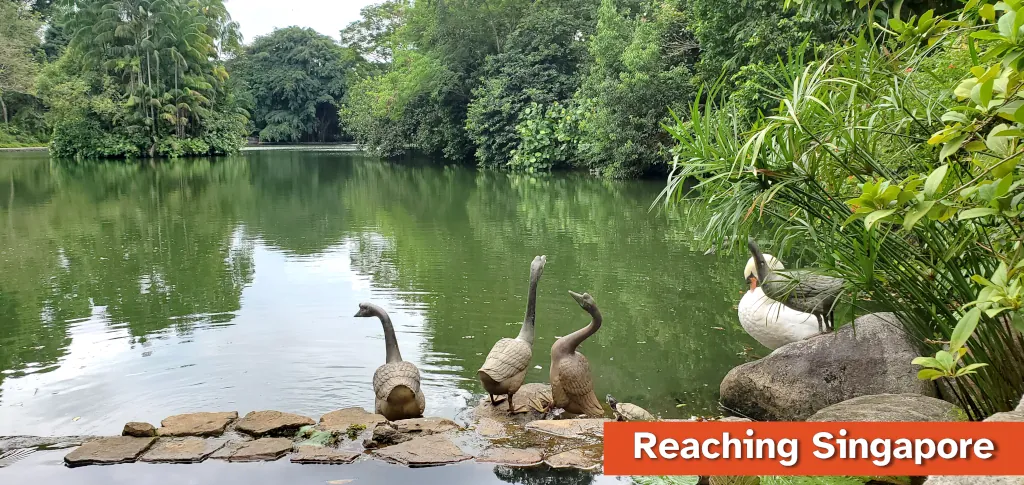
I also highly recommend checking out the Orchid Garden. It’s a point of pride for Singapore where they cultivate orchids as gifts for foreign dignitaries. The Orchid Garden costs S$15 for adults and is free for children to visit. More detail can be found on their website here
8. Merlion
The Merlion is Singapore’s icon. It’s a mythical creature with the head of a lion and the body of a fish.
The Merlion is said to represent Singapore’s original name (Singapura - the lion city), while symbolising Singapore’s humble beginnings as a fishing village.
Visiting the Merlion is free. There is no charge for seeing the statue, getting up close, and taking a selfie with him.
I like recommending the Merlion to visitors who do not have much time in Singapore as his central location is very easy to get to. His home also offers brilliant views out across Marina Bay and of Marina Bay Sands.
To get to the Merlion, I usually recommend one of the following options:
- Option 1: Catching the bus to Fullerton Square bus stop, you then walk through a building to get to the statue
- Option 2: Esplanade MRT station is located across the river from the Merlion - walking over the Jubilee bridge will give you a fantastic view of the Merlion and the surrounding bay
- Option 3: Raffles Place MRT is located close to the Merlion but my secret hack here is to use the underpass within the Fullerton Hotel to get to the Merlion - it has some great history of Singapore and it’s a very nice building to check out.
9. Longest automated train system
Singapore is home to one of the worlds most extensive automated train systems. Trains in Singapore operate without a driver, they are fully automatic capable of driving themselves across the network without human intervention.
This also means you can see out into the tunnel that the train is travelling through - there is no driver’s cab blocking your view!
Using these automated trains is also very cheap. Most journeys will cost between S$1.10 and S$2.00. You can also use a Visa or Mastercard card to pay for the ride (though if you use a non-Singapore one it adds on an extra 60 cents per day for foreign currency conversion).
If you need more help catching the train around Singapore I wrote a complete guide here: reachingsingapore.com/singapore-catch-train-guide
Further Reading
Still looking for ideas of what to do in Singapore? Check out more of my guides here:

